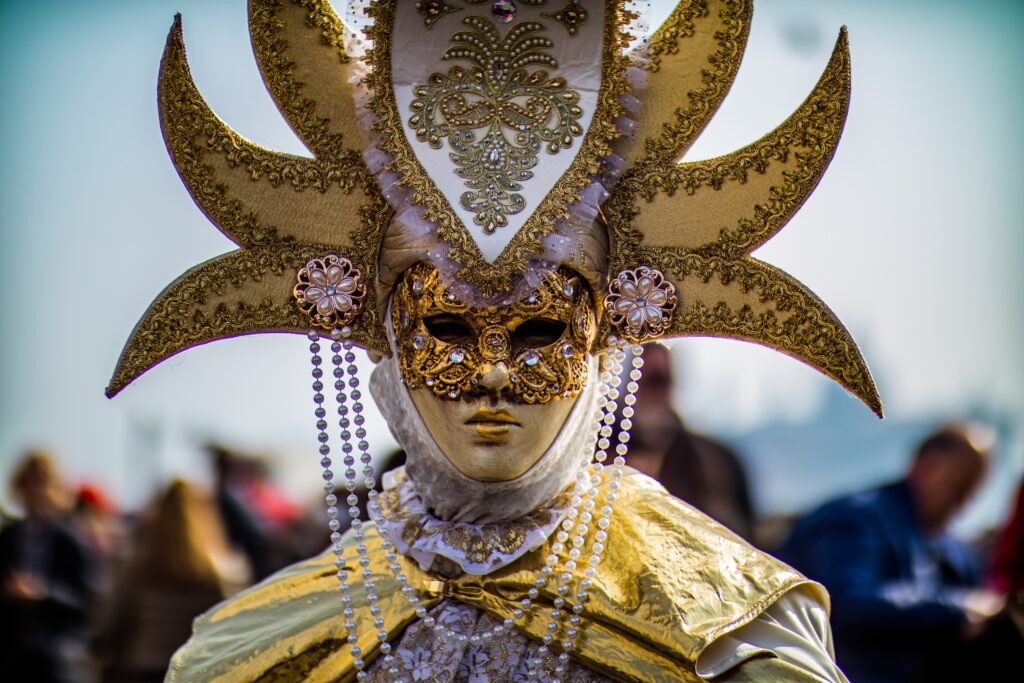
To pass through the first gate Inanna encounters in her descent to the underworld, she must give up her crown. There are lots of mythologies around descent and ascent. The story of Inanna is convenient in having seven gates with specific symbolic items surrendered at each gate. This makes it easy to associate with different parts of ourselves that may need some attention in our spiritual practices.
That being said, we are not ancient Mesopotamians. So, any interpretation is only useful insofar as it enables us to do our own spiritual work, rooted in liberating love, within the context of interdependent relationship. What do you think relates to Inanna’s crown in your own being? Or in the being of our congregation? Or some other community you move in?
To me, the crown represents an outward symbol of authority and visible status. Royalty wears crowns, and no one questions or confronts royalty. It’s one of the benefits of being a monarch. And there’s a part of us that cares very much about outward, visible status. Not necessarily to the point of wearing a literal crown around, but we do like to appear a certain way to people. Acceptable. Maybe even accomplished.
It goes beyond presenting ourselves in a way that garners respect. Of course we like to look smart and successful. We also like the outward appearance of our lives to be such that people won’t ask us if we’re OK. Where it looks like we have it all together. We’re just fine. We don’t need anything, thank you. We are the epitome of our social media tagline.
There are societal pressures to cling to that crown pretty tightly. From a very early age, we learn how to look good—smart, capable, “normal”. We learn to hide those things that could invite critique or make others think less of us. We learn to hide all the things about us that are less than perfect, and cover them over with as close to a perfect image as we can manage. Close enough that most people won’t challenge the disguise.
This shows up in community when people don’t want to be a burden. Or feel embarrassed to mention a challenge they’re facing. Or a diagnosis they’re anxious about. Or even when people sit back and watch others lead because they don’t feel good enough. And sometimes maybe our communities reinforce wearing a crown of unquestionable competence. We make a mistake and are met with something less than grace and second chances. Or we feel shame about having limited capacity to contribute. Or believe we can’t say no and still be lovable.
All of that outward visible authority stuff is False Self territory. The masks we put on because of what we want people to think of us. We apologize for who we are rather than owning it. It’s the thing that keeps us from being truly known and celebrated. After all, who really knows the innermost thoughts and feelings of a monarch?
What would it be like to take off the crown of performative worthiness and just be our messy, complicated, not always ready for prime-time selves? Or maybe your mask (or crown) is something different than I’ve suggested here. The question is still: Can we be in relationships of mutual interdependence, resisting the temptation to put on masks that hide our authentic selves?
And what does that look like for our congregation? Every organization has a crown of outward appearances. Every community wants to be seen a certain way by the larger world. What are the not-quite-honest outward appearances we try to maintain at the expense of being our authentic self as a spiritual community? How might we refocus our energy toward greater integrity to our values and greater spiritual depth if we spent less energy on whatever that crown represents?
Share this post: